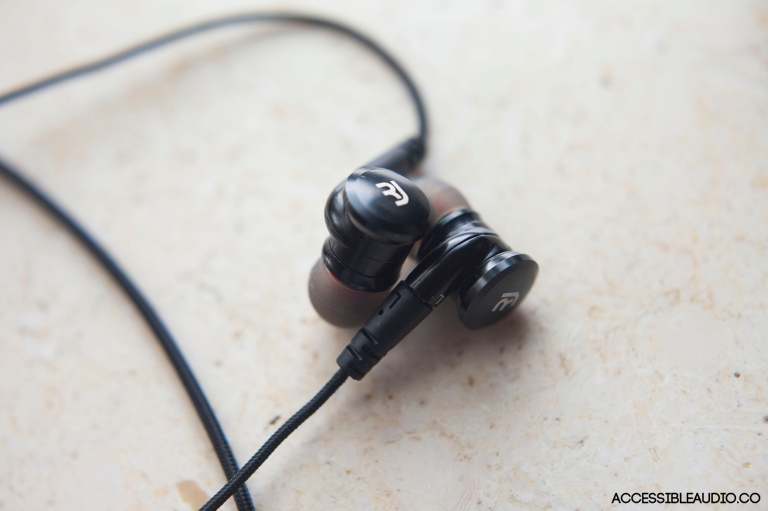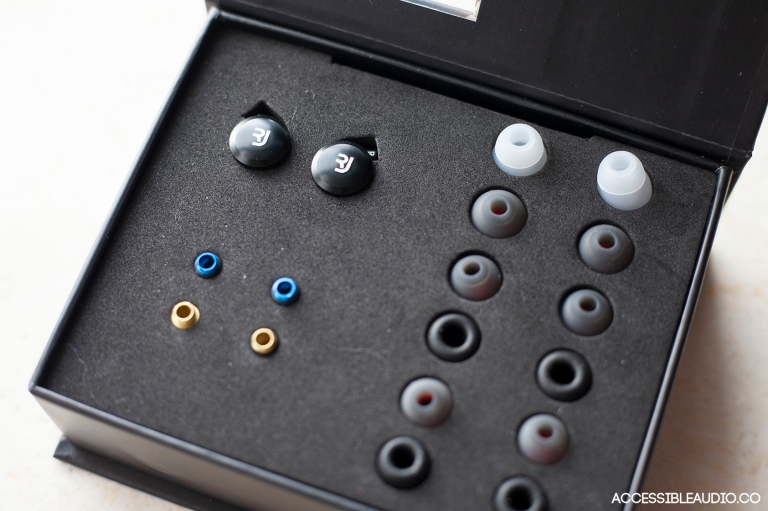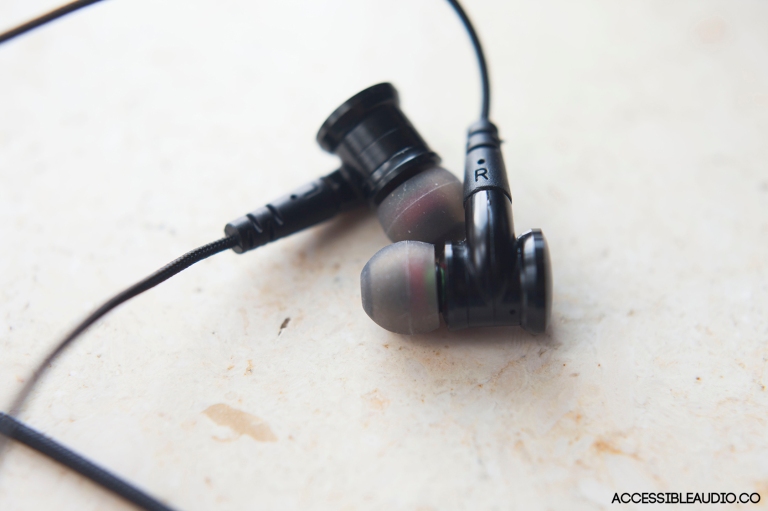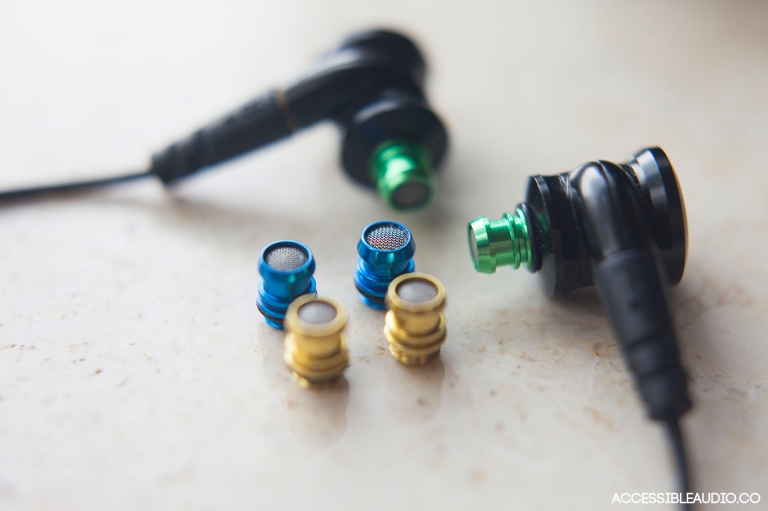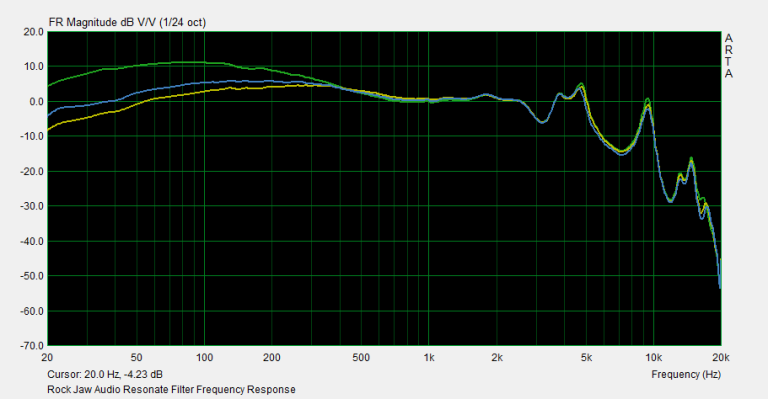We review Rock Jaw Audio’s Resonate hybrid earphone as part of the review tour on HeadFi. Does this small indie company have another hit product in the making?
Rock Jaw Audio is a small audio company from the UK. Their latest product, the Resonate, is yet another earphone with the increasingly popular hybrid design configuration – basically combining the bass reproduction prowess of dynamic drivers with the mid and high refinement of balanced armatures. Since balanced armatures are
generally weak at producing convincing, natural sounding bass,
more and
more companies have gone to hybrid designs instead. Before we move on, we’d like to give a quick shoutout.
Thank you to Rock Jaw Audio for sending this earphone to us for our unbiased opinion and review as part of the Review Tour on HeadFi. The Resonate goes for 124.95GBP. Click here for more info.
The Resonate also features replaceable tuning filters, another design that some companies such as
Shure, RHA, and
MacaW have used to give the user a chance to tweak the sound more to their liking.
Specs
- Drivers: Balanced armature + 8mm dynamic – Hybrid
- Cables: MMCX detachable cables
- Impedance: 16 Ohm
- Sensitivity: 103+/-3dB
- Frequency response: 20 – 20000Hz
- Cord Length: 1.25M
- Jack type: Gold plated 3.5mm
- Eartips: (S/M/L) silicone | (M/L) memory foam | (S) double flange.
- 3x Interchangeable tuning filters
- Can be worn as a standard earphone, or upside down with the cable over the ear
- In-line microphone with universal pause/play button
- Compatible with iOS / Android / Windows Smartphones
Summary
Pros:
-Generally comfortable, easy to wear design
-Comfortable mic
-Tuning filters to customize your own experience
Cons:
-Muddy separation of frequencies
-Too much emphasis on high frequency overtones
-Slightly flat, unrefined sounding bass
-Vocals lack presence and strength
-Plastic around MMCX connection point feels cheap
Accessories & Design
The Resonate comes in a humble little cardboard package with a clear acrylic window on the top lid flap. Encased in 2 layers of soft foam are the earphones themselves, 2 sets of tuning filters, and 6 different eartips including a variety of silicone and foam tip sizes.
If well designed packaging is important to you, this isn’t the most attractive design around, but as a fan of economical and environmentally friendly packaging given the state of our planet right now and the Resonates’ packaging does have this done decently well. However, one small annoyance for me is how all the eartips would fall out from behind the foam separator when lifting the first layer up, leading me to have to clumsily pick everything up from inside the box.
The MMCX cable is also neatly wrapped up for you to unfurl and plug in to the Resonate. The cable is very soft and flexible, and is sleeved with a woven soft synthetic fibre material that is very lightweight and gets points for being not microphonic at all.
The design of the earphone itself is quite simple – a cylindrical design that looks somewhat like a
kendama with the MMCX socket sticking out from the centre of the housing. It’s made of some sort of lightweight metal which feels smooth to the touch, and as combined with its simple design with in a nicely sized package, insertion into the ear is overall comfortable.
The Resonate comes with an inline mic with volume and playback controls that comes in a very basic looking black plastic form with 3 rounded square buttons. Nothing to really comment on here, though perhaps it would have been nice to have it be made of the same metallic looking material as the 3.5mm plug and y-cinch. There is an interesting detail at the cable strain relief end of the 3.5mm plug as there is a spring wrapped around it. Although it looks a little odd, it does seem to serve as good strain relief as it gives both enough rigidity and flexibility to this area where wire breakage often occurs after some use.
The Sound
This section was done with the Green filters (“Energy”) in place, as it was the filter that the product was shipped with, and also suits my own personal preference for slightly bassier sound signature. All testing was done through the FiiO E07K DAC amp with the OnePlus X as the source.
Bass is evident all the way to the lowest frequencies, but there is not much quantity and impact is loose and a little boomy with the Energy filter in place. The bass sound signature sounds somewhat evenly distributed between subbass and midbass, with a medium length decay. However, impact sounds very muddy and lacks definition, in a way that it doesn’t feel solid, nor especially clean and fast despite using the "Energy" filter. The Resonate does not produce very much bass even when pushed with bass heavy tracks, and when it does reach higher bass volumes, the texture is not realistic. It is an overall lackluster performance here.
Unfortunately, in my opinion the bigger problem with the Resonate lies elsewhere due to its weakness in separation and peakiness in the higher range frequencies which I think is causing too much emphasis on overtones, causing a lack of fullness in the reproduction.
Listening to simpler songs with mainly vocals is actually passable, especially with baritone male vocals – tests with some quieter John Mayer and Norah Jones tracks revealed some ability to produce adequate clarity in the vocal region. It is distinctly better in the lower vocal range – the higher the pitch, the thinner the sound gets.
Serious flaws begin to show when many different instruments begin to layer and mix together. The bass begins to sound very muddy, vocals and instruments nearly vanish and sound extremely thin and brittle. Drums are an area I pay a lot of attention to, and with the Resonate they seem to lack distinction except in the cymbals and hi-hats, which, pronounced as they might be, do not sound very convincing. Snare attack seems as if it is barely brushing against my ear and there is an overall thinness to most instruments and lack of fullness especially noticeable in vocals. The difference in the characteristics between dynamic driver and balanced armature are also unforgivingly revealed. The bass sounds increasingly boomy and dark in more complex passages whereas the reproduction of mids and highs is unmistakably more exacting and mechanical sounding, creating an incoherence in the presentation.
I also experienced an incessant scratchy, distorted sound especially when distorted guitars and higher frequency noises were being produced.
Tuning Filters and Measurements
Below is the FR chart of the 3 different tuning filters, taken with ARTA and the Vibro Veritas setup. Each FR result colour corresponds with the respective filter colour; Green for “Energy” (Bass boost), Blue for “Emotion” (Treble boost), and Yellow for “Fusion” (Reference tuning) as described on the Rock Jaw website.
As it can be seen in the chart, the tuning filters probably consist of different dampers that reduce the amount of bass frequencies that are let through, leaving the rest of the frequencies untouched, creating the illusion that the other frequencies have been boosted.
My overall experience with them is similar to my experience with other products that make use of filters – they provide some customisation but aren’t
drastically different and are not going to make one product sound like another.
Due to the bass being a little too boomy for my liking, I found that the Reference and Treble Boost to actually be more preferable, as it reduced the boominess of the bass for slightly more clarity in the bass to midrange transition area. They do not, unfortunately, eliminate the mechanical harshness of the sound in the mids and highs. There was not too big of a difference between the Reference and Treble boost filters apart from the most minor changes in bass quantity between them (refer to measurements).
Conclusion
Judging by their product design Rock Jaw Audio seems to have the right general idea, but to me, the Resonate is overall quite a weak product with its muddy bass, weak instrumental separation and peakiness in overtones. It is a shame that the quality of audio is not better, as the overall design and build quality seem to have been quite well thought out. With some adjustments to the peakiness in the high frequencies and perhaps replacing the dynamic driver with something more capable and less flabby cardboard sounding, hopefully Rock Jaw Audio can redevelop their product to something better.


